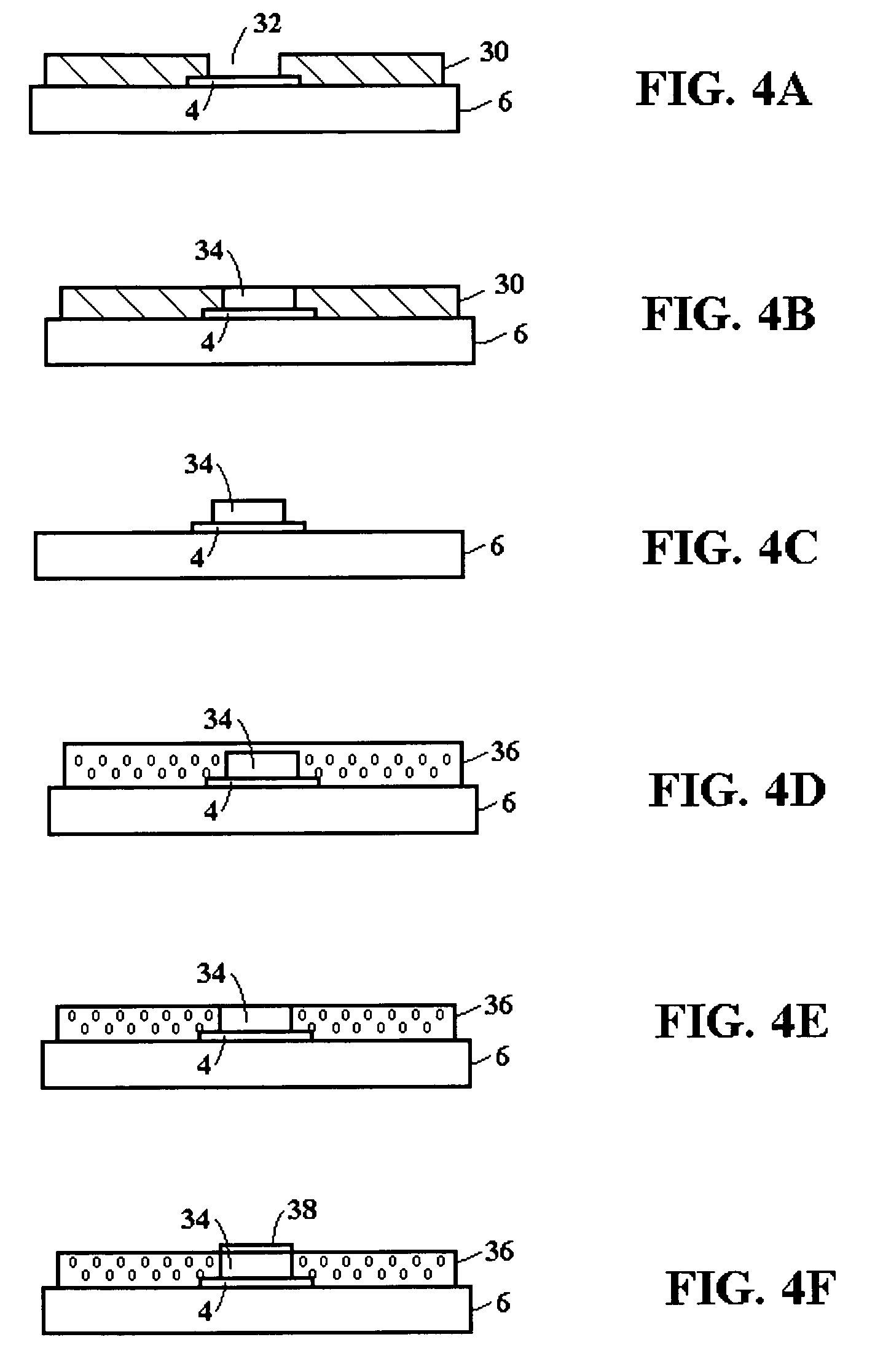Method to build robust mechanical structures on substrate surfaces
a technology of mechanical structure and substrate surface, which is applied in the direction of photomechanical apparatus, instruments, and semiconductor/solid-state device details, etc., can solve the problems of unable to manufacture robust parts, catastrophic failure of the connection of the seed layer to the substrate surface, and more likely to occur peeling or breaking of the metal seed layer from the substrate, etc., to achieve the effect of robust mechanical structur
- Summary
- Abstract
- Description
- Claims
- Application Information
AI Technical Summary
Benefits of technology
Problems solved by technology
Method used
Image
Examples
Embodiment Construction
[0032]FIG. 3A illustrates a robust mechanical structure for supporting spring probes according to the present invention, including a foundation formed over a bond pad 4 for supporting a spring probe 2, a reinforcing insulation layer 22 provided around the foundation, and application of a force F to a spring probe 2 formed on the foundation. FIG. 3A includes a substrate 8 with a insulation coating layer 6 and a metal seed layer bond pad 4 formed on the layer 6, as described in FIGS. 1-2. In FIG. 3A, components carried over from FIGS. 1 and 2 are similarly labeled, as will be components carried over in subsequent drawings.
[0033]To provide the foundation, FIG. 3A includes a metal plating layer 20 applied over the metal seed layer 4. The spring probe 2 is shown constructed on the metal plating layer 20. A dielectric material 22 is provided over the exposed polymer surface 6, around the edges of the metal seed layer pad 4, around the edges of the metal plating layer 20, on a portion of t...
PUM
| Property | Measurement | Unit |
|---|---|---|
| adhesive | aaaaa | aaaaa |
| resilient | aaaaa | aaaaa |
| mechanical structure | aaaaa | aaaaa |
Abstract
Description
Claims
Application Information
 Login to View More
Login to View More - R&D
- Intellectual Property
- Life Sciences
- Materials
- Tech Scout
- Unparalleled Data Quality
- Higher Quality Content
- 60% Fewer Hallucinations
Browse by: Latest US Patents, China's latest patents, Technical Efficacy Thesaurus, Application Domain, Technology Topic, Popular Technical Reports.
© 2025 PatSnap. All rights reserved.Legal|Privacy policy|Modern Slavery Act Transparency Statement|Sitemap|About US| Contact US: help@patsnap.com



